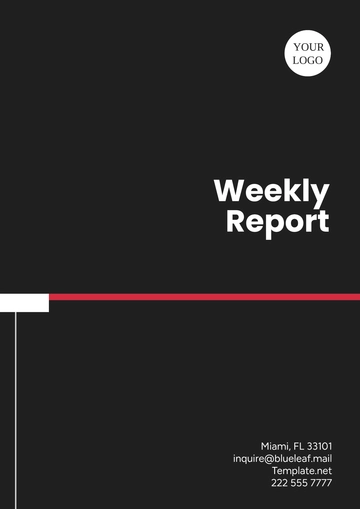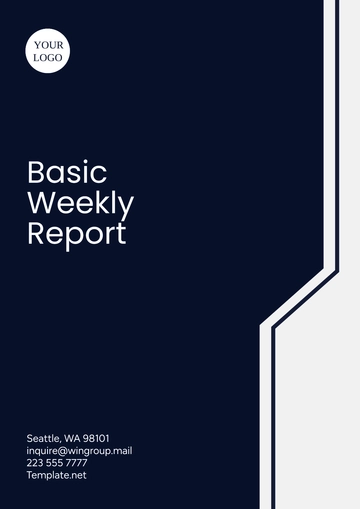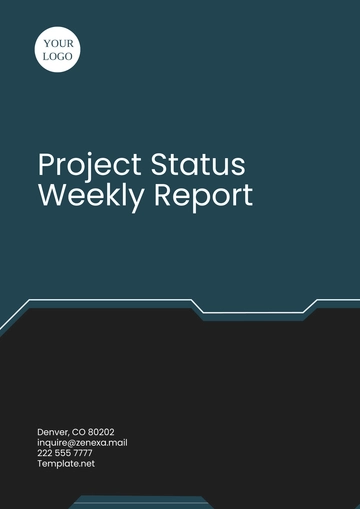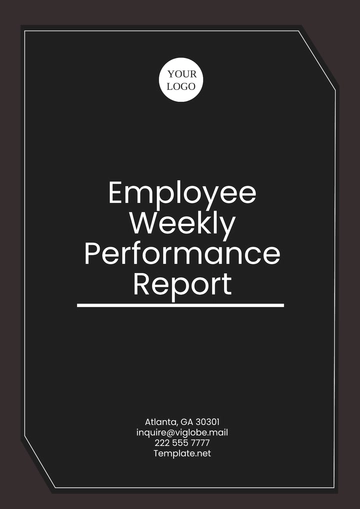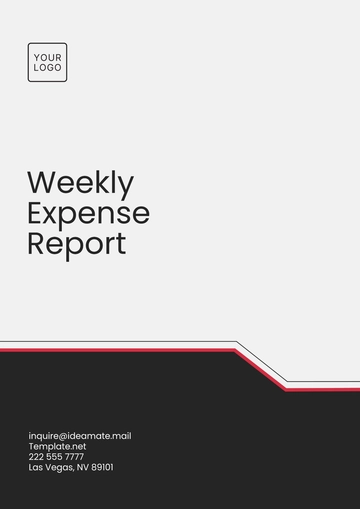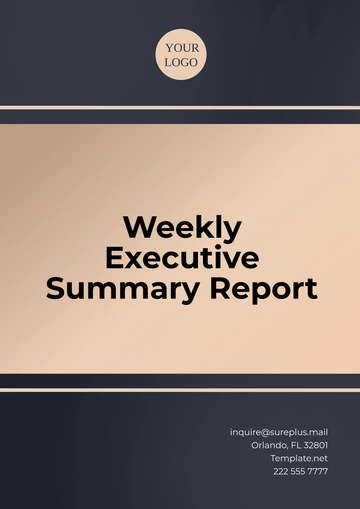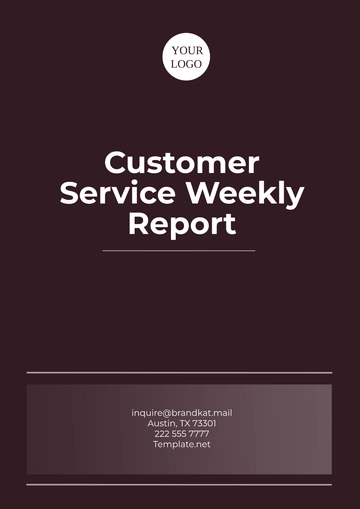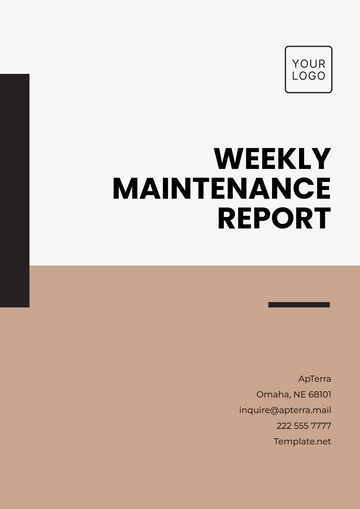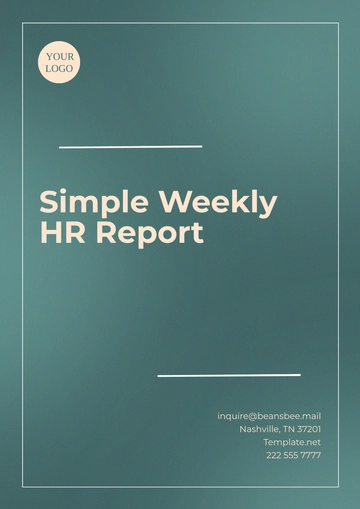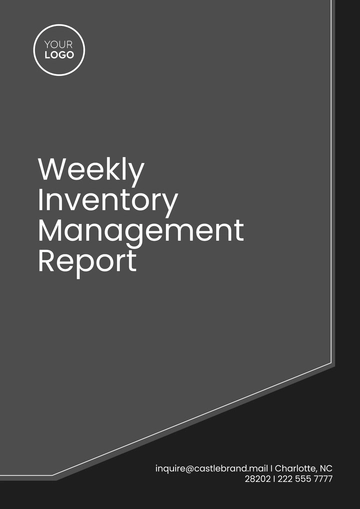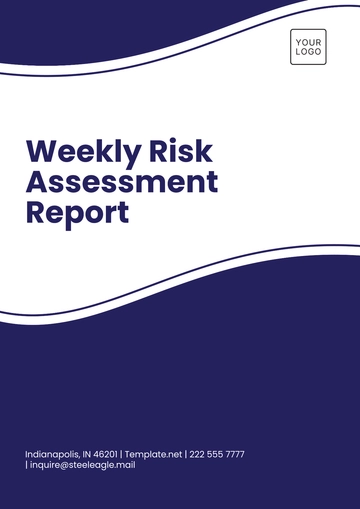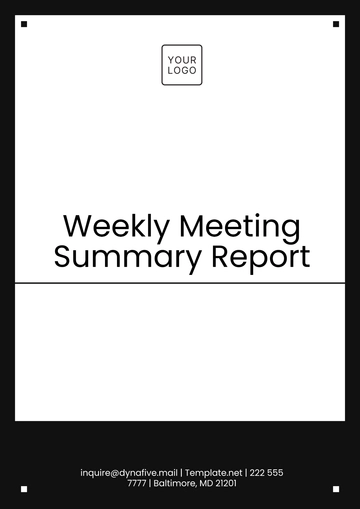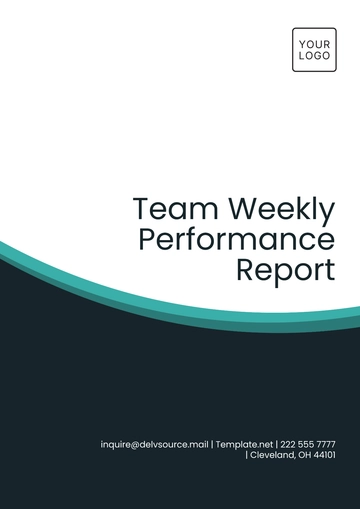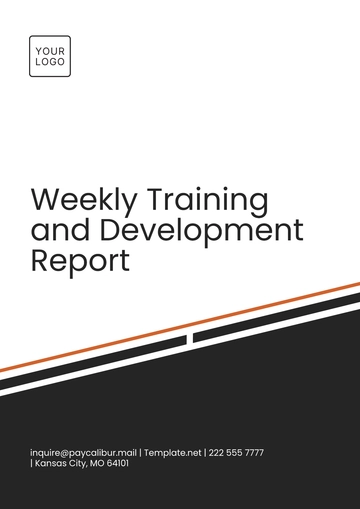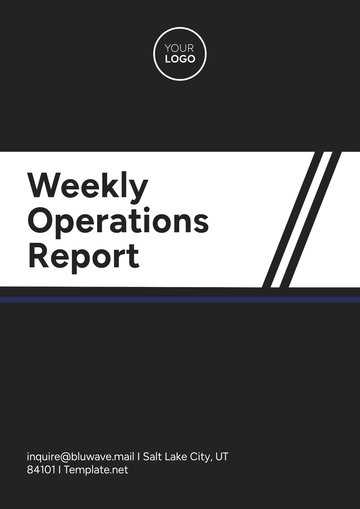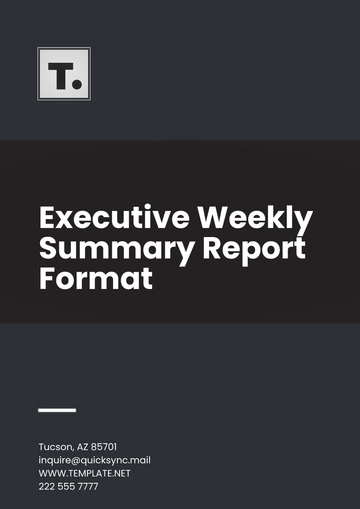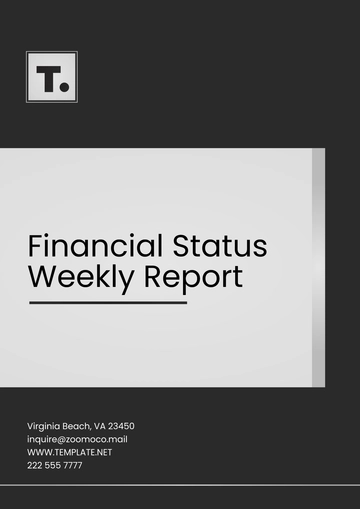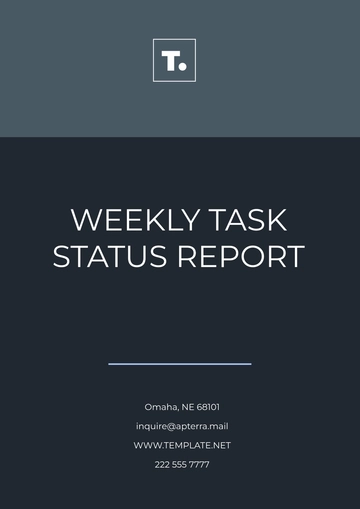Free Weekly Revenue Report
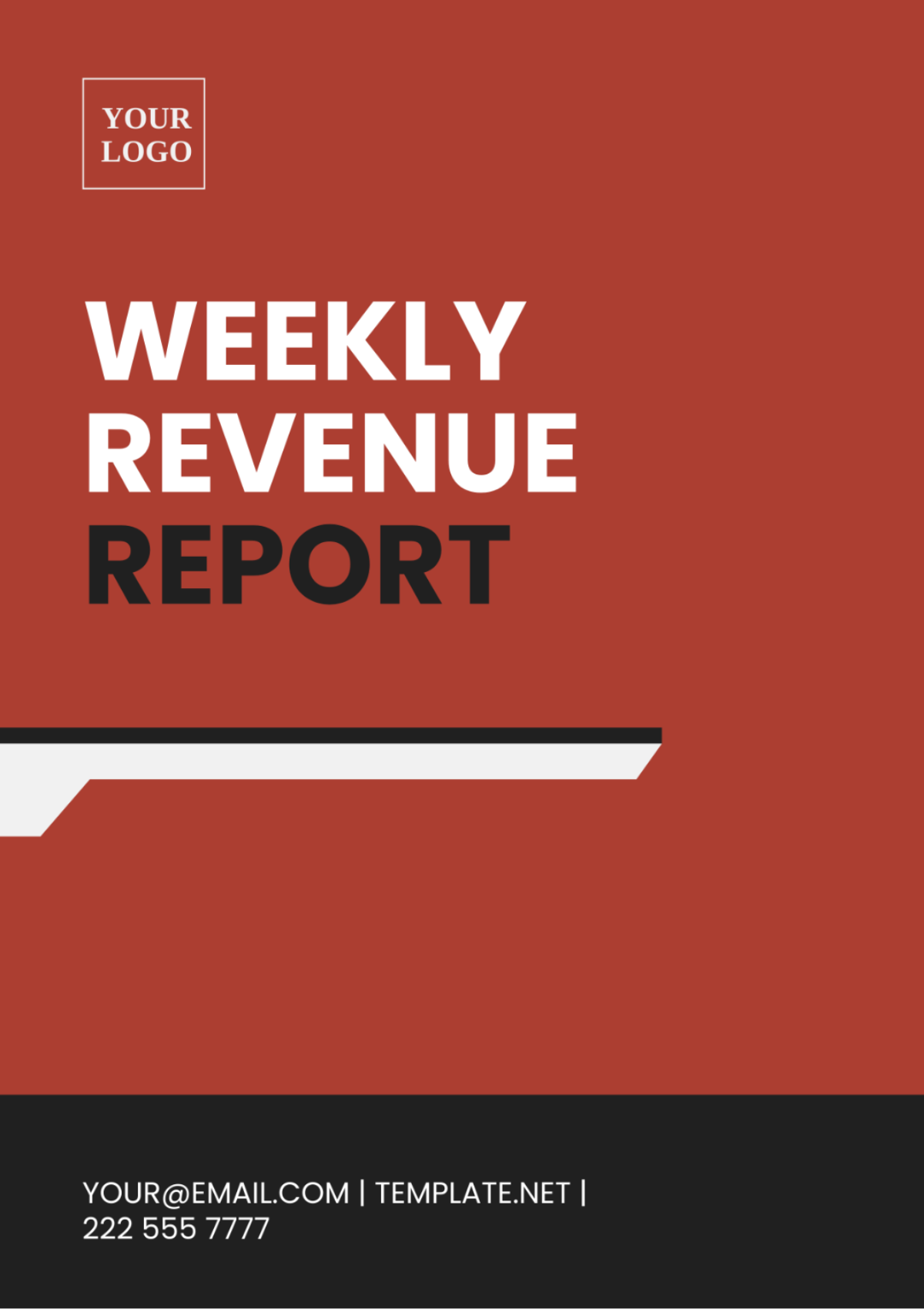
Prepared by: [YOUR NAME]
Company: [YOUR COMPANY NAME]
Date : [CURRENT DATE]
I. Executive Summary
The [YOUR COMPANY NAME] Weekly Revenue Forecast Report provides a comprehensive overview of projected revenue streams, enabling effective budgeting and resource allocation. In this section, a succinct summary of key findings and forecasts is presented to facilitate quick decision-making by stakeholders.
Current Revenue Performance: The report begins with an analysis of the company's current revenue performance, highlighting any notable trends or deviations from targets.
Forecasted Revenue Trends: Utilizing historical data and market insights, the report forecasts future revenue streams for the upcoming week, enabling [YOUR DEPARTMENT] to anticipate financial outcomes and plan accordingly.
Actionable Insights: Key insights and recommendations are provided to support strategic decision-making, ensuring alignment with revenue targets and organizational objectives.
II. Methodology
A. Data Collection
Internal Data Sources: Historical sales data, customer transactions, and other internal sources are collected and analysed to identify revenue trends and patterns.
External Market Data: Market research reports, industry publications, and economic indicators are leveraged to understand external factors influencing revenue performance.
Forecasting Techniques: Statistical models, such as time series analysis and regression analysis, are employed to forecast future revenue streams based on historical data and market dynamics.
B. Analysis Approach
Historical Analysis: Past revenue performance is analysed to identify trends, seasonality, and any underlying factors driving revenue fluctuations.
Forecasting Models: Various forecasting models are utilized to project future revenue streams, considering factors such as market demand, pricing strategies, and competitive landscape.
Scenario Analysis: Sensitivity analysis is conducted to assess the impact of different scenarios on revenue forecasts, allowing for risk mitigation and contingency planning.
III. Findings
A. Historical Revenue Trends
In this section, a detailed analysis of historical revenue trends is conducted to identify patterns and anomalies that may impact future forecasts.
Monthly Revenue Overview: A month-over-month comparison of revenue performance is provided, highlighting any significant fluctuations or seasonal trends.
Product/Service Segmentation: Revenue performance for each product or service category is analysed to identify top-performing offerings and areas for improvement.
Customer Analysis: A breakdown of revenue by customer segment or demographic is presented, offering insights into customer preferences and purchasing behavior.
B. Forecasted Revenue Projections
This section presents the forecasted revenue projections for the upcoming week based on historical data, market trends, and other relevant factors.
Sales Pipeline Analysis: The status of the sales pipeline is assessed, including potential deals in the pipeline and their likelihood of closing within the forecasted period.
Market Conditions: External factors such as market demand, economic indicators, and competitor activity are considered to provide a realistic outlook on revenue projections.
Scenario Analysis: Sensitivity analysis is conducted to assess the impact of various scenarios on revenue forecasts, enabling [YOUR DEPARTMENT] to anticipate potential risks and opportunities.
IV. Recommendations
A. Budget Allocation
In this section, recommendations for budget allocation are provided based on the forecasted revenue projections and strategic priorities of [YOUR COMPANY NAME].
Investment Priorities: Areas requiring additional investment to support revenue growth, such as marketing campaigns or product development initiatives, are identified and prioritized.
Cost Optimization Opportunities: Opportunities for cost optimization and efficiency improvements are highlighted, ensuring that resources are allocated effectively to maximize returns.
B. Staffing Requirements
The staffing requirements necessary to support projected revenue streams are outlined in this section, ensuring that [YOUR DEPARTMENT] has the necessary manpower to meet demand.
Workforce Planning: An assessment of staffing levels across various departments or functions is conducted to identify any gaps or overages in staffing requirements.
Training and Development Needs: Any training or development initiatives required to enhance the capabilities of [YOUR DEPARTMENT] staff are identified, ensuring alignment with revenue targets and strategic objectives.
V. Conclusion
The [ YOUR COMPANY NAME ] Weekly Revenue Forecast Report concludes with a summary of key insights and recommendations, empowering [YOUR DEPARTMENT] to make informed decisions and drive revenue growth. By leveraging the insights provided in this report, [YOUR COMPANY NAME] can optimize budgeting and forecasting processes to achieve its financial objectives effectively.
- 100% Customizable, free editor
- Access 1 Million+ Templates, photo’s & graphics
- Download or share as a template
- Click and replace photos, graphics, text, backgrounds
- Resize, crop, AI write & more
- Access advanced editor
Introducing the Weekly Revenue Report Template from Template.net. This editable and customizable tool empowers you to track your weekly earnings effortlessly. With seamless integration into our Ai Editor Tool, tailor your reports to perfection. Elevate your financial insights with precision and ease.
You may also like
- Sales Report
- Daily Report
- Project Report
- Business Report
- Weekly Report
- Incident Report
- Annual Report
- Report Layout
- Report Design
- Progress Report
- Marketing Report
- Company Report
- Monthly Report
- Audit Report
- Status Report
- School Report
- Reports Hr
- Management Report
- Project Status Report
- Handover Report
- Health And Safety Report
- Restaurant Report
- Construction Report
- Research Report
- Evaluation Report
- Investigation Report
- Employee Report
- Advertising Report
- Weekly Status Report
- Project Management Report
- Finance Report
- Service Report
- Technical Report
- Meeting Report
- Quarterly Report
- Inspection Report
- Medical Report
- Test Report
- Summary Report
- Inventory Report
- Valuation Report
- Operations Report
- Payroll Report
- Training Report
- Job Report
- Case Report
- Performance Report
- Board Report
- Internal Audit Report
- Student Report
- Monthly Management Report
- Small Business Report
- Accident Report
- Call Center Report
- Activity Report
- IT and Software Report
- Internship Report
- Visit Report
- Product Report
- Book Report
- Property Report
- Recruitment Report
- University Report
- Event Report
- SEO Report
- Conference Report
- Narrative Report
- Nursing Home Report
- Preschool Report
- Call Report
- Customer Report
- Employee Incident Report
- Accomplishment Report
- Social Media Report
- Work From Home Report
- Security Report
- Damage Report
- Quality Report
- Internal Report
- Nurse Report
- Real Estate Report
- Hotel Report
- Equipment Report
- Credit Report
- Field Report
- Non Profit Report
- Maintenance Report
- News Report
- Survey Report
- Executive Report
- Law Firm Report
- Advertising Agency Report
- Interior Design Report
- Travel Agency Report
- Stock Report
- Salon Report
- Bug Report
- Workplace Report
- Action Report
- Investor Report
- Cleaning Services Report
- Consulting Report
- Freelancer Report
- Site Visit Report
- Trip Report
- Classroom Observation Report
- Vehicle Report
- Final Report
- Software Report
